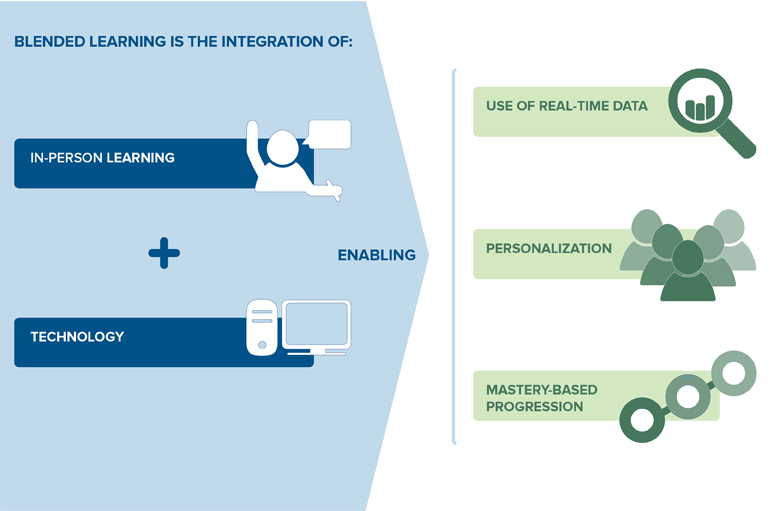
Since our founding, The Learning Accelerator’s belief has been that blended learning is an innovation with the potential to transform the education of millions of students in American K-12 schools. By using technology to help teachers and students more deeply understand and respond to individual needs, we think schools can better reach their goals: effective, equitable, and engaging learning for every student.
Much has changed since TLA began work in 2012. Blended learning, while not by any means a new idea, was very much a nascent and novel practice. Most of our understanding of it at the time was built on theory and the promise of a small number of early models. Today, thousands of schools and hundreds of districts are actively implementing blended models of instruction. There are also hundreds of organizations – from professional development providers to technology consultants – stepping in to help schools blend.
Given this, the TLA team spent some time last summer getting clearer on our own thinking. “What have we learned about blended learning?” we asked. “And how does our new understanding of it inform our broader vision and strategy for change?” This conversation resulted in two things: a clearer vision and a new area of work for our organization.
Our Vision
As a team, we have developed clarity on what we mean when we say we are an organization seeking to transform education through blended learning. We have articulated our vision not just to give focus to our own working idea of what blended learning is, but also to what we hope schools will accomplish through its adoption.
Blended learning is the strategic integration of in-person learning and technology to enable real-time data use, personalization, and mastery-based progression.
As many will note, there are actually a lot of definitions of blended learning out there. At its core, our vision aligns well with the definitions used by other leaders in this work, including the Christensen Institute.
At the same time, we believe blended learning is not in itself an end, but an enabler to accomplish greater educational goals. For us, these goals include using data more effectively, personalizing to individual student need and choice, and making progress a function of mastery rather seat time. These instructional practices are connected to a body of evidence for their effectiveness and are foundationally critical to deeper learning. As we think they are incredibly important for achieving greater and equitable student achievement, we are explicitly making them part of our vision for our work and the greater agenda we have for the educational ecosystem.
Finally, our vision isn’t intended to be a stagnant or prescriptive one. Rather, it is one we will test and revise as more is known and further work is done by innovators across the field.
Our Work
Once we arrived at our vision, we decided as a next step we needed to see if we could identify blended learning sites where all components of our vision were in action. We wondered, if we could identify and learn from those schools, what might we be able to share and how could we help others accelerate their progress?
Over the last six months, TLA has been deeply engaged in this piece of the work. We have done diligence on more than 100 blended learning schools and systems to identify places trying to implement blended learning to enable real-time data use, personalization, and mastery-based progression. We interviewed over forty school and district teams and ended up visiting hundreds of classrooms at nearly 30 education organizations. Across all of these visits we sought to understand how teachers and students were working together and we gathered data on instructional and operational practices. We have learned a lot.
Over the spring and into the summer, our team will be codifying what we saw – both larger observations and patterns as well as specific school practices – to share broadly with others. Our goal will be to help educators identify actionable strategies and starting points to apply to their own practice.
We’ll be posting more here on the blog as we go to share early ideas and solicit feedback. Stay tuned!
Interested in learning more about our vision or getting a sneak peek at some of the things we saw? Join me at our SXSWedu Summit on Tuesday, March 9.

